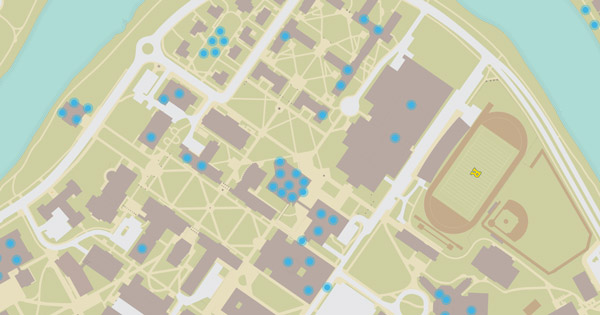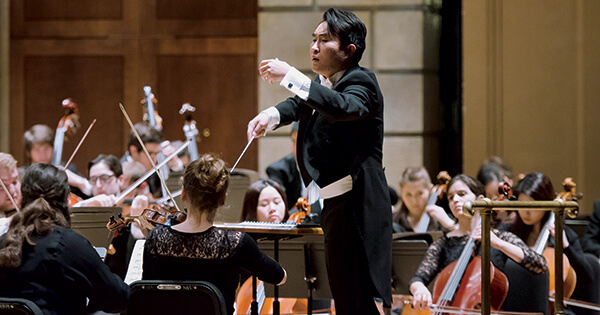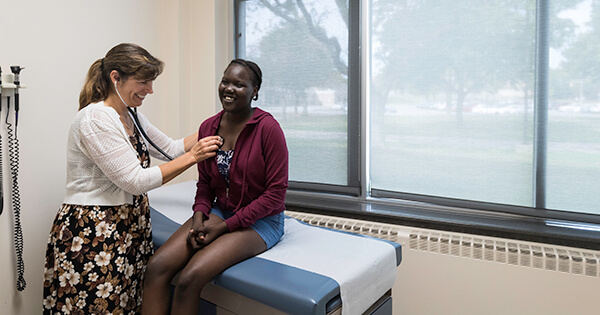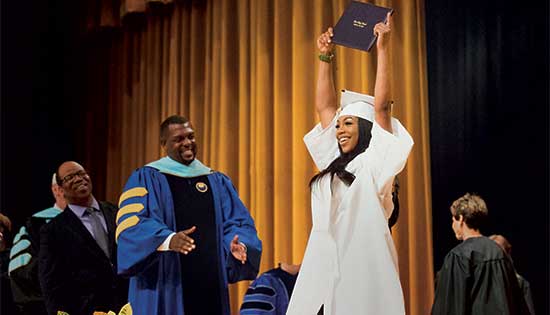Cancer and cut-free biopsies
Cancer and cut-free biopsies
“To have two women scientists as cofounders of a company is unusual. It’s a fantastic example for other women to realize their potential as well.”—Jannick Rolland
Despite advances in microsurgery, it can still be difficult to tell if a skin cancer has been entirely removed without a follow up biopsy, which could require a patient to come back for a second operation.
But what if the biopsy could be performed noninvasively as part of the initial procedure, so the surgeon would know immediately whether additional cancerous tissue needed to be removed?
Jannick Rolland, the Brian J. Thompson Professor of Optical Engineering and the director of the Center for Freeform Optics at the University of Rochester, first conceived of an idea to do just this 11 years ago after experiencing a biopsy and learning about the risks involved. About the same time, a technique called optical coherence tomography (OCT) was coming into wide use to obtain images inside tissues.
“For me, it really connected the dots,” Rolland says. “If we could do an optical biopsy noninvasively it would eliminate the risks. The OCT images were kind of low resolution and noisy, so my first goal was to produce images of a higher definition. I knew if we could do this we could actually save lives.”
Rolland and one of her PhD advisees Cristina Canavesi ’13 (MS), ’14 (PhD), ’15S (MBA) worked together to develop a novel optical device that essentially uses light to render high-resolution images of cells just below the surface of living tissues such as skin or the cornea. With this device, there’s no cutting and the biopsy is done right at the time of the surgery.
In 2013, the two researchers cofounded LighTopTech, a University of Rochester spinoff that has developed an optical device that makes cut-free biopsies—technology that could lead to better cancer detection and patient outcomes. Rolland is the company’s chief technology officer and Canavesi is its president.
The startup has received financial support from Luminate, a high tech accelerator funded by New York State that is focused on advancing the next generation of optics, photonics, and imaging companies. LighTopTech has also received support from the National Science Foundation, NYSTAR Foundation, and High Tech Rochester.
Rolland’s and Canavesi’s optical device is getting closer to commercialization. It has been proven effective in two clinical trials at the University’s Medical Center, which is a convenient five-minute walk from the River Campus and its Institute of Optics. The close proximity of these spaces to one another has helped facilitate clinical trial collaboration and accelerated the application of their product and its myriad applications in and out of the medical field.
For example, beyond cancer detection, the technology could be used to image the cornea to detect and monitor nerve loss that results from diabetes. It could also be used to obtain images beneath the surface of fabricated materials to monitor the quality of the manufacturing process, thus improving quality and yield.
Rolland and Canavesi never expected to be entrepreneurs. Initially, they tried licensing the technology to companies. However, advanced discussions with two companies eventually proved fruitless. “By that point, we felt the technology was ready to go, so we said ‘Let’s do it,’” Canavesi says.
On the LighTopTech website, they proudly identify their company as “woman-owned.” That in itself is noteworthy given the continuing underrepresentation of women in engineering and technical fields.
This video delves into breakthrough non-invasive technology invented by Jannick Rolland and then further developed by her and Cristina Canavesi. This optical technology can help surgeons detect cancerous tissue.
You can help
To learn how you can advance this kind of breakthrough science and technology, contact Eric Brandt ’83, Executive Director of Advancement for the Hajim School, at (585) 273-5901.
—Kristine Thompson, January 2018 (edited from this original story by Bob Marcotte)





